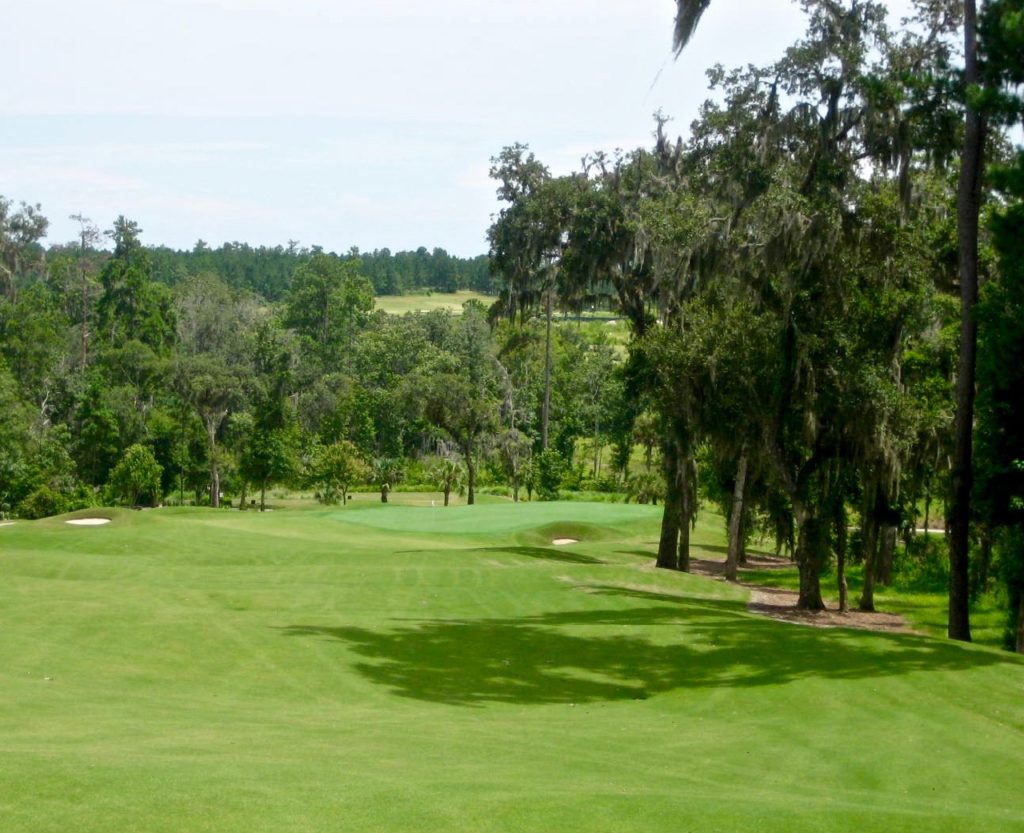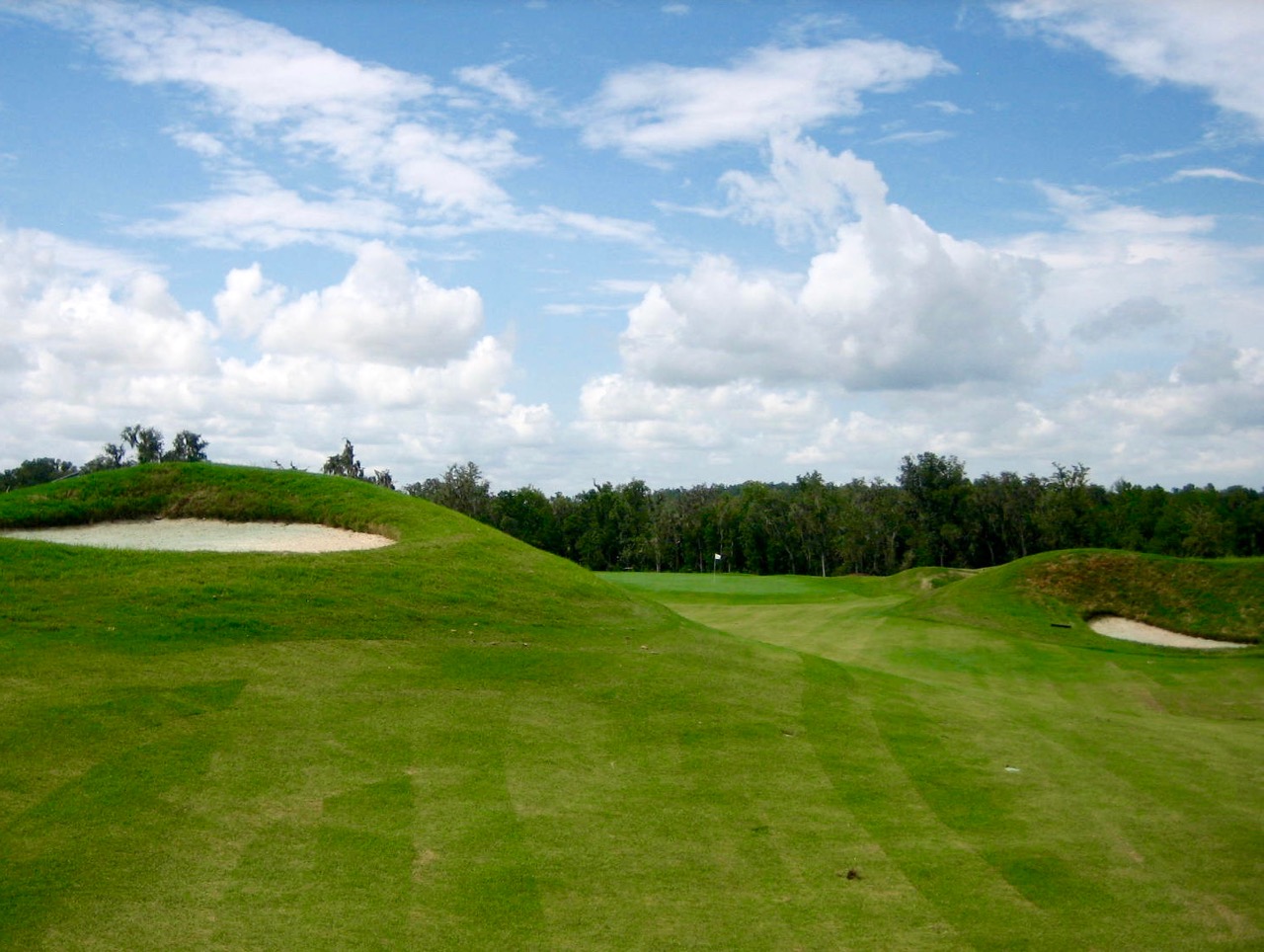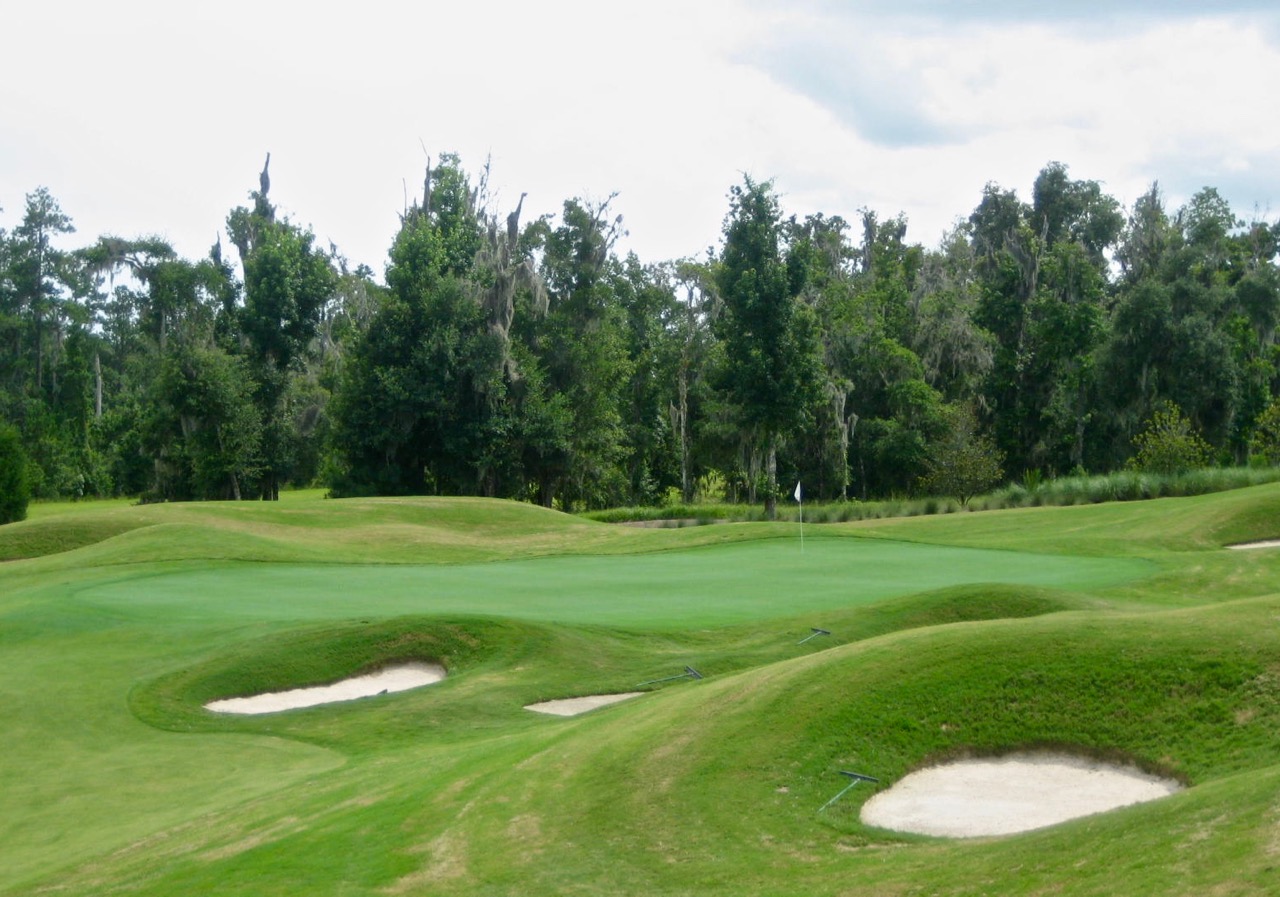Southern Hills Plantation: Dye Steps Forward

I thought Southern Hills Plantation Club had a chance to win national acclaim when I first heard, around 2001, that Pete Dye was building a course in this part of west-central Florida.
Being familiar with World Woods and the sand ridges that run through the Brooksville area, it seemed like the soils, the region’s big and graceful elevations and the Dye imprimatur would combine for something spectacular.
Both World Woods and The Dunes Club (a striking and marvelous but now defunct Art Hills course) are located north of Brooksville atop long runs of pure sand. Southern Hills, however, is south of the town and built on clays and harder soils.
The elevation changes at “SoHilly” (as it’s called) are real, but most of it is concentrated on a forested 250-foot peak on the north end of the property, around which most of the first nine gathers. The verticality is actually confined primarily to one hole, the long par-5 7th that crests the ridge and then trundles steeply down the back slope.

By Dye standards the architecture is subdued. The course was designed for everyday residential play (even though the housing component never took flight), and rarely does the design present either a sense of danger–real or imagined–or the razor’s edge outcomes usually prevalent in Dye’s work.
The best parts are the smartly placed greenside hazards (mostly in the form of small scoop bunkers) and some interesting swales and roll offs around the edges of the putting surfaces. The landing zones in the roomy corridors, which are spiced with humps and hollows, tilt slightly uphill to help kill the modern game’s Herculean drives.
SoHilly can be considered part of Dye’s late period (following his early low-profile work, including Harbour Town, and the middle period of heavy earth working designs culminating in Whistling Straits), which blends more sweeping construction movements with smaller bunkers, ridges and knobs. Think of this as a precursor to his Olympian sized work at French Lick.

There’s something both interesting and reverential to Golden Age architecture about the intimacy of the bunkering in his late period designs. But these features often lack scalable relationship to the site and to each other, especially compared to the grand presentations of his middle period like TPC Sawgrass or Blackwolf Run.
I miss the broad horizontal strokes that used to define a Pete Dye course–the layering of planes and the arch, almost inside joke nature of the defensive fortifications. But like the novelist Don DeLillo, who as he’s aged has attempted to refine and distill his once explosive literary language to an essence that now seems almost barren of humanity, Dye has seemed all too eager to strip away all the flourish and major character from his final works.

Dye never needed good ground to make good architecture. Regardless of the site, the bones and strategic structure of his designs were always sound. That’s still the case here, though without the savor or devilishness with which we’ve grown accustomed.
After the big rise and fall of the 7th hole, the course settles into a low pattern, turning in a loop through a large wetland area. It tries to muster some of the classic left-right/right-left shimmy, but just doesn’t seem to have the energy to get all the way there.
The most interesting hole is the short par-4 15th with a fairway studded by conical mounds decollated by bunker sand. While it’s intriguing to navigate a path through this astroid field, you come to realize these volcano features are just the latest trope in a long searching list of experiments Dye has explored, with some more successful than others.
It turns out this was never destined to be a master work. SoHilly is a big golf course with small bunkers, some interesting greens, and a location about 15 miles from potential greatness.
I wish I hadn’t gotten my hopes up so high, but even if the property wasn’t what I’d expected at least Dye could have sprinkled in a little of the old black magic. (87)
Southern Hills Plantation Club
Brooksville/Tampa
Architect: Pete Dye
Year: 2005
